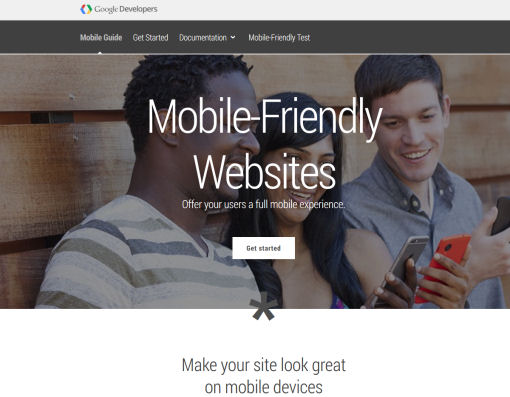We now live in an age where technology and the internet are rapidly being integrated into our daily lives. With the dawn of the “internet of things” and the proliferation of smart watches, tablets, not to mention the ubiquitous smartphone, it seems hard to imagine a time when our devices existed in isolation without the internet capabilities that we have all become accustomed to today.
This also means that people are interacting with the web in ways that we have never seen before. While desktop use is still the norm, mobile searches now account for roughly 30% of all web traffic, which makes sense considering that there are now more smartphones and mobile devices out there than PCs.
Google has taken notice of this trend and started to roll out a new algorithm on April 21st which takes into account mobile signals from webpages when creating a results page as well as indexes applications for relevant content. And while mobile ranking continues to utilize certain desktop signals (such as page speed) to create rankings, we can expect for there to be continual movement towards the integration of mobile search with the desktop experience.
The question that has yet to be answered in light of these changes is what the impact on SEO will be. Currently we can only speculate as to how the mobile update will tangibly affect results pages. However, this shift towards mobile certainly indicates that the search industry is about to undergo a major changes in response to evolving user trends. And SEOs must change right along with it.
The Customer is Always Right
There was a brief time, in the late 2000s, when Google was able to dictate what qualifies as a quality website through their control of the search market and punitive updates for those sites who violated their webmaster guidelines. This was during the era where “content is king” was still a fresh idea, and SEO existed almost in a vacuum of keywords, links and site architecture hoping to capitalize on the copy produced in some back room.
What we find now is that user experience is becoming the maxim by which search engines are judging websites. This means that simply producing great content and a sleek site are not the only keys to success. Not to say that you shouldn’t have those things–in fact, if you do not have those things you should probably get on that.
The reality is that engines like Google are getting better, much better, at discerning and adjusting for user intent in their results pages in an attempt to improve their own onsite experience. Furthermore, with features like the Knowledge Graph and the “answer box”, they are finding new and inventive ways to address long tail search terms and ultimately provide the information that people are looking for on-demand.
Google has also begun indexing social media for search signals. While the extent of this practice is not fully understood, we do know that Twitter is being indexed. This development is not wholly a surprise, as many SEOs have been expecting social signals to become an increasingly important ranking factor.
All of this goes to show that the traditional ranking formula (content + links = high ranking) may become less important as search continues to grow and look elsewhere for ranking factors. The emphasis on a user’s intention and experience of the internet as the means of creating accurate search engine results pages calls for a new understanding of internet marketing.
The changes emphasize that social, content and SEO can not be done in a vacuum. Rather, these different approaches of generating traffic must be performed in concert with one another to maximize their individual potential. Itis truly a case of the whole being greater than the sum of its part.
Internet on the Move
Another user trend that is affecting SEO practices is the shift towards mobile search. This is another place where user experience is radically changing the way that we go about the internet marketing process as a result of user experience. Think about all the time that has been spent creating these megalithic sites with widgets and java scripts and pictures and popup chats and…the list goes on. Furthermore, think about how much time it takes to optimize these sites for search.
Now try loading one of those sites on your cell phone. Odds are you run into a few problems trying to navigate your way to the cookie recipe you were looking for. Since mobile searches are on the rise, mobile optimization is becoming an integral part of any technical SEO strategy. And with the introduction of Google’s mobile update later this month, creating mobile responsive pages with a short load time has almost been mandated.
An interesting change that I have seen in the wake of mobile search is that content is becoming streamlined. I’m not sure if this is the result of people seeking to imitate Google’s Knowledge Graph or simply an anticipation of the mobile user’s experience, but content is being trimmed down–Hemingway would be happy.
It is funny to think back to my days in college. I remember searching for JSTOR articles on my way to class, straining to read the small cascading text before regurgitating it to a professor. While having the ability to do this was great, the experience was not.
Now more than ever it is necessary to create content with mobile in mind. This means writing pieces that serve as answers to possible long-tail searches as well as addressing local queries since these represent a growing number of mobile searches. People who search for answers want just that, as opposed to a list of possible sites to research further.
Making the Change
This gradual emphasis on mobile search bolsters the idea that content is the basis for good performance in results pages. While there are certain things that every webmaster may be able to do to optimize their site (creating mobile responsive pages, decreasing load time), the reality is that people now more than ever know what they are looking for and know when they have found it. As SEOs, we must mind this fact as we continue to develop pages and content that seeks to help the user access that information without creating unnecessary obstacles.









